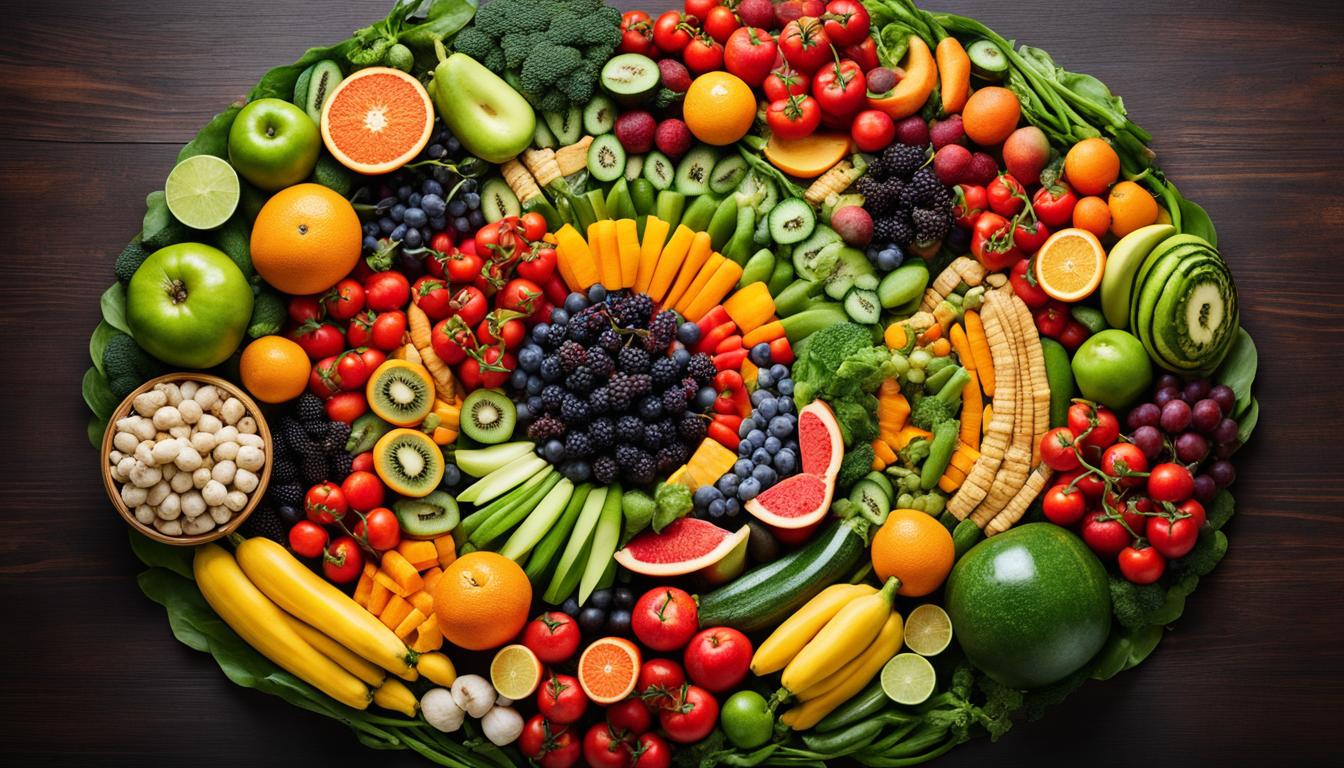
Welcome to a fresh start and a new year filled with hope and possibilities. As we bid farewell to the past and embrace the future, we often look to traditions that bring us good luck and prosperity. One such tradition involves the consumption of fruits and vegetables, symbolizing abundance, health, and wealth.
When the calendar flips to January 1st, many cultures around the world believe that indulging in fruits and veggies will bring them good luck throughout the year. These timeless customs have been passed down through generations, fostering a sense of hope and positivity.
Not only do these New Year beliefs connect us to our roots and heritage, but they also encourage healthy eating habits. By incorporating an array of fruits and vegetables into our diets, we nourish our bodies and promote overall well-being.
In this article, we will explore the significance of fruits and veggies in New Year traditions and how they are believed to usher in good luck and prosperity. Join us on this journey as we uncover the secrets behind these cherished customs and discover the power of healthy eating for a thriving year ahead.
Embracing Global Cultures: Ushering Luck with Fruits and Vegetables
In the realm of New Year’s traditions, fruits and vegetables take center stage, serving as symbols of luck, abundance, and prosperity. However, these traditions vary across different cultures, each embracing their unique beliefs and practices associated with these natural blessings. Let’s journey through various corners of the world and explore the diverse cultural traditions that revolve around fruits and vegetables.
“The traditions of different cultures truly enrich our understanding of the world and its vibrant tapestry of celebrations. Exploring how fruits and vegetables are regarded in diverse New Year rituals provides us with a profound appreciation for the power of cultural heritage.”
Spain, known for its exuberant festivities, welcomes the New Year with a peculiar yet delightful tradition. As the clock strikes midnight, Spaniards hurriedly pop 12 grapes into their mouths, consuming one with each chime. This practice is believed to usher in prosperity and good luck for the coming months.
Across the vast continent of Asia, the significance of fruits and vegetables in New Year celebrations takes on various forms. In China, oranges symbolize wealth and good fortune. Their vibrant color and exquisite aroma are thought to bring luck and positive energy into homes and businesses. Meanwhile, in Japan, the yuzu fruit is associated with purification and warding off evil spirits during the New Year period.
The rich tapestry of cultural traditions continues in India, where the harvest festival of Pongal celebrates the abundance of the season. Colorful patterns of rice and vegetables are created as offerings to the gods, symbolizing prosperity and gratitude. In a similar vein, Bengalis in India and Bangladesh prepare a special dish called “Shorshe Ilish,” comprising hilsa fish and mustard sauce, to symbolize good luck and abundance for the year.
As we explore the traditions from around the globe, it becomes evident that fruits and vegetables transcend their nutritional value and transform into vessels of hope and good fortune. From the vibrant feasts of Latin America to the intricate dishes of Africa and the unique customs of the South Pacific, the symbolic power of fruits and vegetables fills the hearts and minds of people worldwide.
Today, as we celebrate the New Year and embrace global cultures, let us remember the significance of fruits and vegetables in fostering luck and abundance. By cherishing these rich traditions, we can cultivate a deeper understanding and appreciation for the diverse cultures that make our world a truly extraordinary place.
Culinary Symbols of Prosperity: Pork and Cabbage on New Year’s Day
On New Year’s Day, many cultures have specific culinary traditions that involve pork and cabbage. The consumption of pork is often associated with prosperity due to its symbolism in certain cultures, while cabbage is believed to represent strands of wealth and longevity.
The Rich Symbolism Behind Pork Consumption
Pork has long been regarded as a culinary symbol of prosperity. In many cultures, pork is associated with abundance and financial success. Its rich, fatty texture is thought to represent wealth and the idea of “fat” wallets. Additionally, pigs are known for their ability to forage and find food easily, which reflects a sense of prosperity and good fortune for the coming year.
Cabbage: Strands of Wealth and Longevity
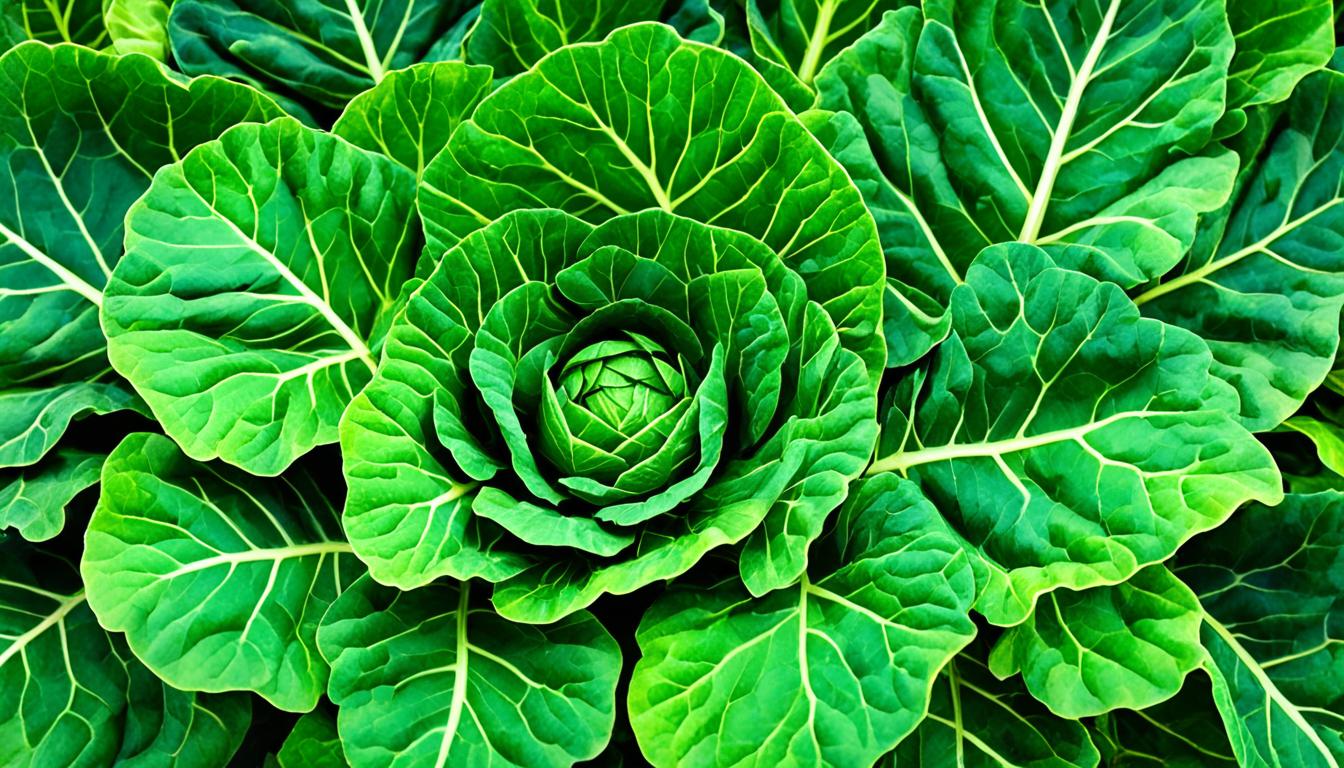
Cabbage, on the other hand, is often considered a symbol of both wealth and longevity. Its green color represents money and financial prosperity, while its layered structure symbolizes growth and a long, prosperous life. In some cultures, it is believed that eating cabbage on New Year’s Day will ensure a year filled with good health and longevity.
By incorporating pork and cabbage into their New Year’s Day meals, people hope to attract prosperity, wealth, and longevity for the coming year. These culinary traditions reflect the deep-rooted beliefs and aspirations for a prosperous and fulfilling future.
Stay tuned as we continue to explore the fascinating traditions and culinary symbolism associated with New Year’s celebrations around the world.
Black-Eyed Peas: A New Year’s Day Staple for Good Fortune
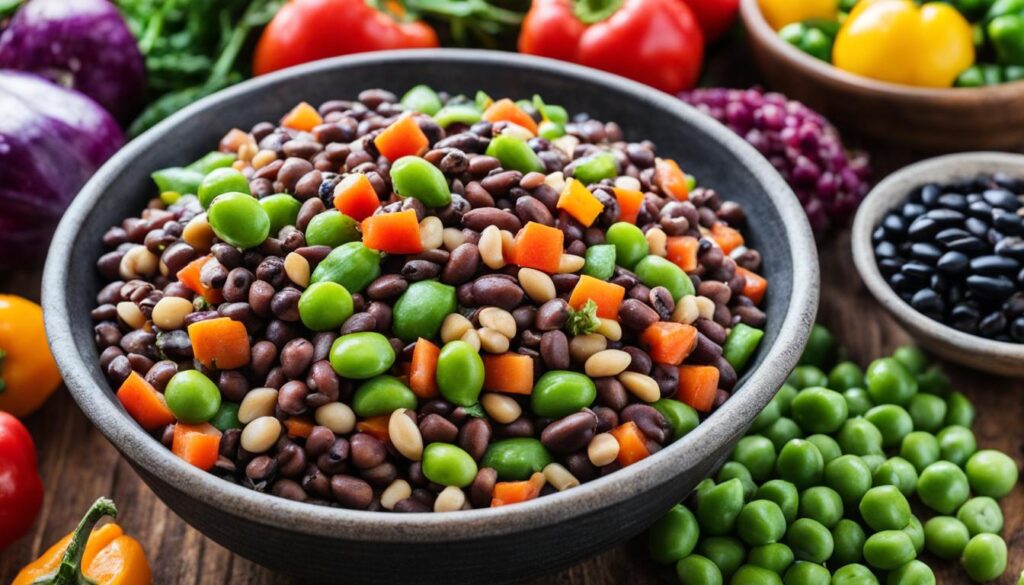
In the southern United States, black-eyed peas have long been considered a staple food for New Year’s Day. It is believed that consuming black-eyed peas on this auspicious day brings good fortune and prosperity for the rest of the year. This tradition is deeply rooted in cultural beliefs and superstitions, symbolizing the hopes and wishes for a prosperous and fortunate year ahead.
The history and significance of this tradition can be traced back to the Civil War era. When Union troops raided the Confederate army’s food supplies, they often overlooked the black-eyed peas as they were primarily used as animal feed. As a result, the black-eyed peas became an important source of sustenance for the Confederate soldiers and the enslaved African Americans. It is said that this humble legume helped sustain many families during a time of scarcity, becoming synonymous with good luck and survival.
On New Year’s Day, black-eyed peas are typically prepared and enjoyed in a dish called “Hoppin’ John.” This traditional Southern recipe combines black-eyed peas, rice, and spicy seasonings, symbolizing a well-rounded and prosperous year. Each spoonful is believed to bring good fortune and a taste of abundance.
As families gather around the table to share this symbolic meal, they express gratitude for the blessings of the past year and eagerly embrace the possibilities of the new year. The tradition of consuming black-eyed peas on New Year’s Day serves as a reminder to remain hopeful, resilient, and open to the opportunities that lie ahead.
Greens for Gains: Collard Tradition and Its Affinity with Prosperity
When it comes to New Year traditions involving vegetables, one that stands out is the consumption of greens, particularly collard greens. These leafy greens hold significant cultural symbolism and are believed to bring prosperity and financial fortune in the new year.
The Color of Money: Greens and Financial Fortune
The vibrant green color of collard greens is often associated with money and wealth. It is believed that by eating collard greens on New Year’s Day, individuals invite financial gains and abundance throughout the year. This tradition has been passed down through generations and remains a popular practice in many communities.
Warding Off Spirits with Vegetable Vigil
In addition to their association with prosperity, collard greens also have a spiritual significance. It is believed that consuming greens on New Year’s Day helps ward off evil spirits and brings protection and good luck for the coming year. This belief in the protective properties of greens adds an additional layer of significance to their consumption during New Year celebrations.
To fully embrace the collard tradition, families prepare and cook collard greens in various ways, often incorporating ingredients such as bacon or ham hocks for added flavor. This steadfast dedication to the collard tradition reflects the importance placed on prosperity and warding off negative energies in the pursuit of a prosperous and fortunate year ahead.
So, as you plan your New Year’s Day menu, consider adding collard greens to your table to invite success and financial fortune, while also protecting your household from any lingering spirits of the past year.
Lucky Rice Dishes: From Hoppin’ John to Asian Inspirations
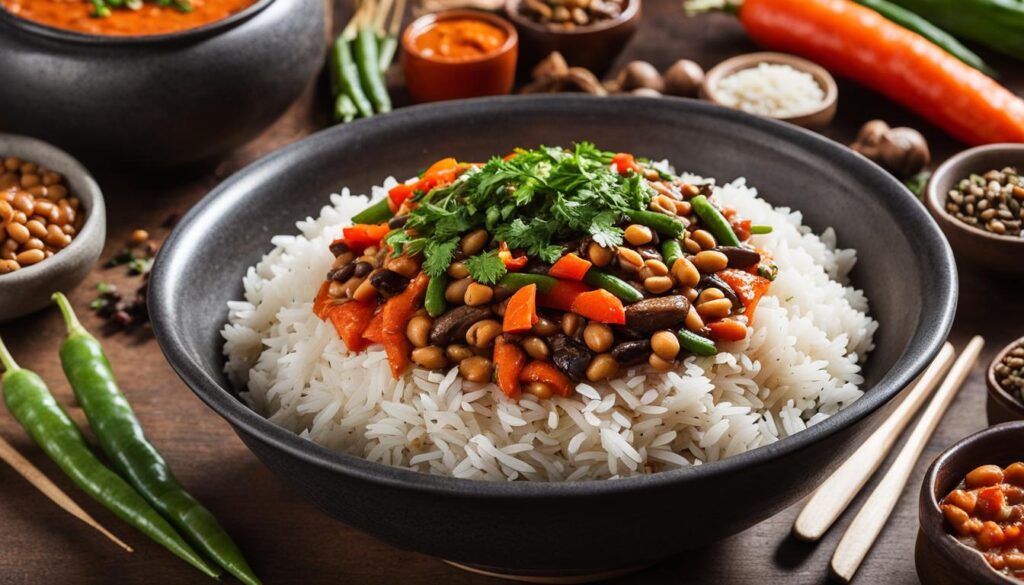
In many cultures, rice is considered a symbol of prosperity and good luck. It is a staple food that holds a significant place in various New Year traditions, both in the West and the East. Let’s explore two popular rice dishes, Hoppin’ John and Asian-inspired rice dishes, and the cultural beliefs surrounding them.
Rice for Riches and Good Omens
Hoppin’ John is a traditional Southern United States dish made with black-eyed peas, rice, and pork. It is believed that eating Hoppin’ John on New Year’s Day brings good luck and attracts wealth and prosperity for the coming year. The black-eyed peas represent coins, the rice symbolizes riches, and the pork signifies progress and forward movement.
Asian cultures also have their own rice dishes that are associated with good fortune and auspiciousness. In Chinese cuisine, steamed rice is served as a symbol of abundance and prosperity. It indicates a wish for wealth and a bountiful year ahead.
Similarly, in Japanese cuisine, there is a belief that eating rice on New Year’s Day brings good luck. The Japanese word for rice, “gohan,” sounds similar to the word for “honorable family,” so consuming rice is seen as a way to maintain family unity and attract blessings for the entire household.
Asian New Year Celebrations: The Longevity of Noodles
Aside from rice, Asian New Year celebrations also feature noodles, which have their own significance in terms of longevity and good fortune. In Chinese culture, long noodles represent long life. During Lunar New Year celebrations, it is customary to enjoy a bowl of longevity noodles, which are extra long and uncut to symbolize a wish for a long and prosperous life.
In many other Asian countries, such as Japan and Korea, noodles are also consumed during New Year celebrations. The length and unbroken nature of the noodles are thought to symbolize a long and uninterrupted life span.
Rice dishes like Hoppin’ John and Asian-inspired rice dishes, along with the inclusion of noodles during Asian New Year celebrations, are a testament to the cultural beliefs and traditions surrounding these grains. They serve as a reminder to embrace the symbolism of luck, wealth, and longevity as we welcome the new year and all the possibilities it holds.
The Sweet Taste of Success: New Year Desserts
Desserts play a significant role in New Year celebrations across cultures. These sweet treats are believed to bring a taste of success and abundance for the coming year. From decadent cakes to traditional pastries, New Year desserts are infused with symbolism and cultural beliefs that are meant to attract luck and prosperity.
“Indulging in New Year desserts is not just about satisfying your sweet tooth; it is a way to invite positive energy and good fortune into your life,” says renowned pastry chef, Maria Rodriguez.
One popular New Year dessert is the King’s Cake, which is traditionally enjoyed in many countries on Epiphany, also known as Three Kings’ Day. The cake is typically made with rich, buttery pastry dough and filled with sweet almond paste or fruit fillings. A small figurine or coin is hidden inside the cake, and the person who finds it is believed to receive blessings and good luck throughout the year.
In Greece, it is customary to serve Vasilopita on New Year’s Day. This cake is named after St. Basil and is prepared with a coin hidden inside. The person who finds the coin in their slice is considered to be blessed with good luck and success for the year ahead.
Another widely recognized New Year dessert is the Turrón from Spain. This traditional nougat is made with almonds, honey, and sugar and is often enjoyed during the holiday season. Turrón symbolizes unity and strength, and it is believed that indulging in this treat will bring sweetness and success in the upcoming year.
From the rich and creamy Black Forest Cake in Germany to the colorful and vibrant Mochi in Japan, New Year desserts are a reflection of cultural beliefs and regional traditions. Each dessert holds a special significance and is carefully prepared to usher in luck, joy, and prosperity.
| New Year Dessert | Country/Region | Symbolism |
|---|---|---|
| King’s Cake | Various countries | Luck and blessings |
| Vasilopita | Greece | Good luck and success |
| Turrón | Spain | Sweetness and prosperity |
Table: New Year Desserts and Their Symbolism
As the New Year approaches, consider incorporating these delicious desserts into your celebrations to not only satisfy your sweet tooth but also to embrace the traditions and beliefs associated with them. With every bite, you are metaphorically indulging in a taste of success and inviting an auspicious start to the year ahead.
Tradition, Good Luck, New Year Beliefs: Eating Fruits and Vegetables
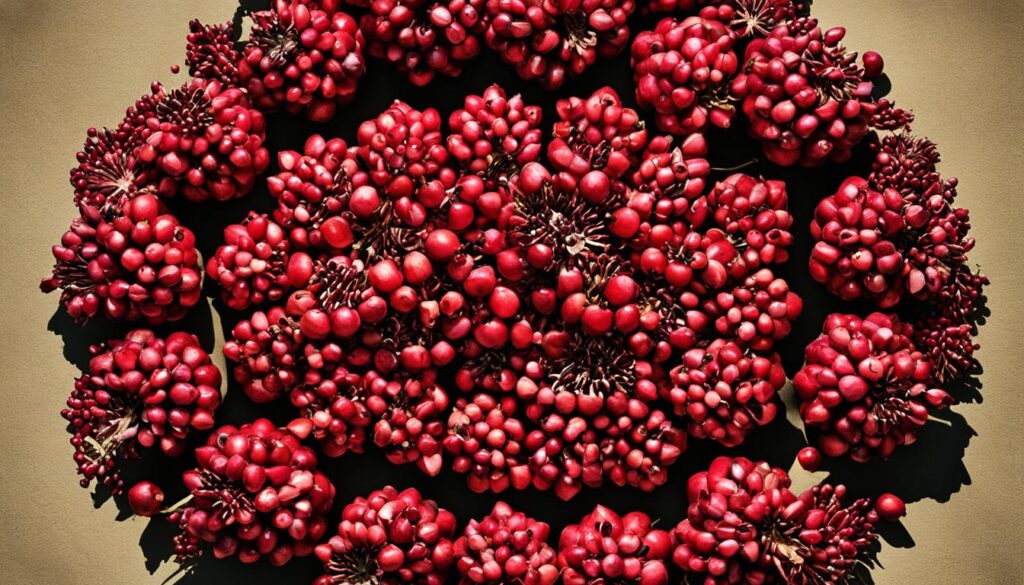
Eating fruits and vegetables on New Year’s Day is a common tradition that is believed to bring good luck and prosperity. Across cultures, these wholesome foods hold deep symbolism and significance in welcoming the new year with positivity and optimism.
Sweet Circular Fruits: A Global Sign of Fortune
In many traditions, sweet circular fruits are regarded as a universal symbol of fortune. Their round shape represents wholeness, completeness, and continuous abundance. One such fruit is the pomegranate, which is associated with fertility, wealth, and good fortune. The vibrant ruby-red seeds inside the pomegranate are believed to represent prosperity and the promise of a fruitful year.
Grapes, another popular choice, are often consumed at the stroke of midnight to ensure good luck for the coming year. In countries like Spain, it is customary to eat twelve grapes, each representing one month, while making a wish with each grape. This tradition is believed to bring about prosperity, happiness, and good fortune in the twelve months ahead.
Prosperity in Variety: Pomegranates and Grapes
The belief in the auspiciousness of fruits extends beyond pomegranates and grapes. Varieties of fruits, such as oranges, apples, and bananas, are also considered symbolic of abundance and prosperity. These fruits are often included in New Year’s feasts and celebrations as a manifestation of hope for a bountiful and prosperous year ahead.
By incorporating fruits and vegetables into our New Year’s traditions, we not only embrace a healthier and balanced start to the year but also invite good luck, positive energy, and prosperity into our lives.
Lentils, the Tasty Tokens: Italy’s New Year Gift
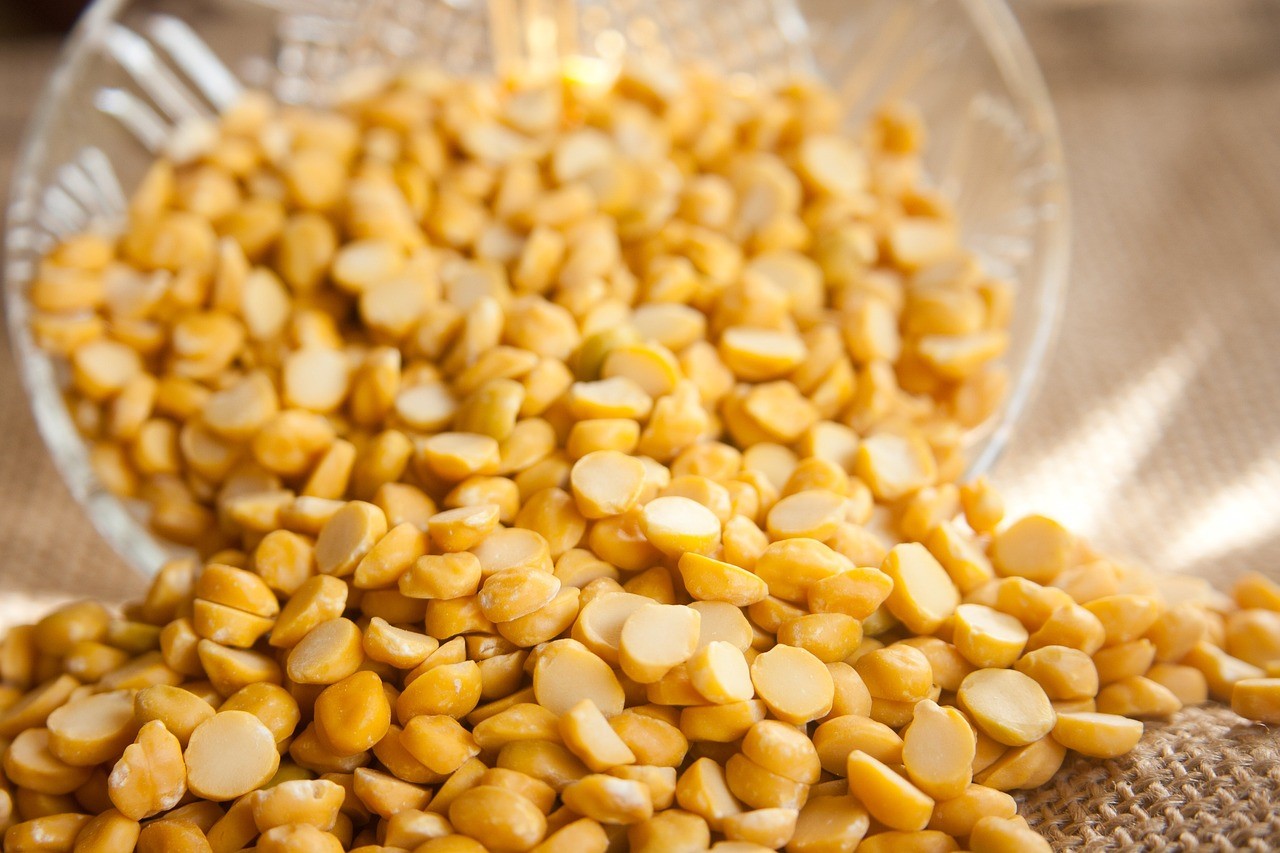
In Italy, lentils are regarded as a special New Year’s gift that symbolizes prosperity and wealth. These tiny legumes hold great significance in Italian traditions, and their consumption on New Year’s Day is believed to bring financial fortune for the coming year.
Eating Like a Millionaire: Lentils’ Resemblance to Coins
Lentils’ resemblance to coins is one of the reasons they are considered lucky in Italian culture. It is believed that by eating lentils on New Year’s Day, individuals can attract wealth and abundance, as they mimic the shape of coins. This tradition dates back to ancient times, when coins were considered symbols of prosperity and eating lentils was a way to symbolically imitate this wealth.
Pulses of Prosperity: Diverse Recipes for Good Luck
Italian cuisine offers a wide variety of mouthwatering lentil recipes that are enjoyed on New Year’s Day to invoke prosperity. From hearty lentil soups to flavorful lentil salads, these recipes showcase the versatility of lentils and their ability to bring good luck.
Here are a few delicious lentil recipes that you can try:
- Lentil and Vegetable Soup: A comforting and nutritious soup made with lentils, vegetables, and aromatic herbs.
- Lentil and Sausage Stew: A hearty stew combining lentils, sausages, tomatoes, and herbs for a rich and flavorful dish.
- Lentil Salad with Feta Cheese: A refreshing salad featuring cooked lentils, crumbled feta cheese, fresh vegetables, and a tangy dressing.
These diverse lentil recipes not only provide a delightful dining experience but also serve as a symbol of good luck and prosperity in the Italian New Year celebrations.
Embrace the tradition of lentils on New Year’s Day and savor the flavorful dishes that can help manifest a year filled with prosperity and abundance.
Lunar New Year Delicacies: Dumplings and Fish for Abundance
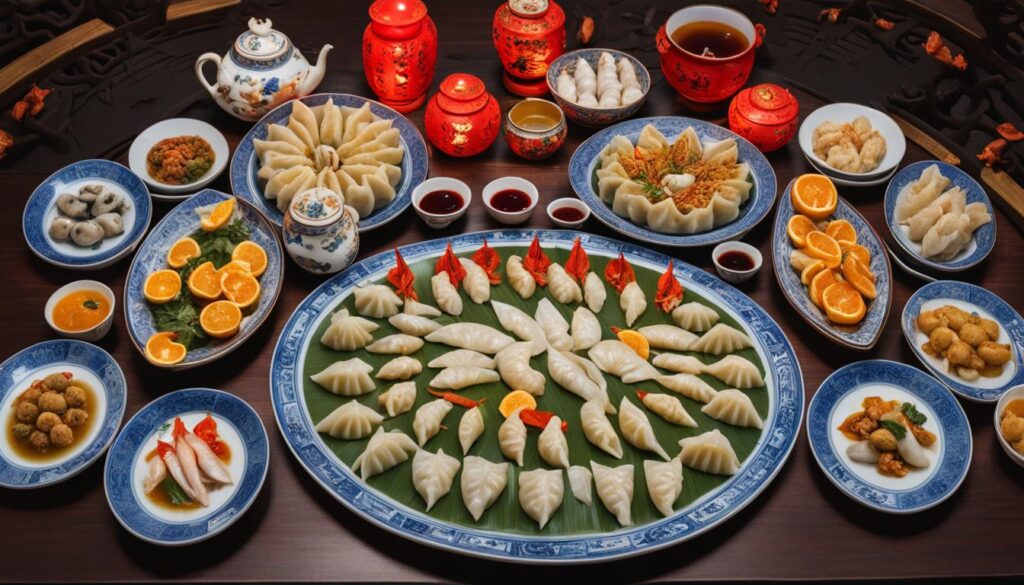
The Lunar New Year is a time of celebration and symbolic traditions in many Asian cultures. Among these traditions are the culinary delights that hold special significance during this festive season. Two of the most commonly enjoyed delicacies during the Lunar New Year are dumplings and fish. These dishes not only tantalize the taste buds but also carry deep symbolic meanings related to abundance and prosperity.
Dumplings, also known as jiaozi in Chinese culture, are a staple Lunar New Year dish. Their shape resembles ancient Chinese gold or silver ingots, symbolizing wealth and prosperity. Eating dumplings during the Lunar New Year is believed to bring fortune and abundance in the coming year. Families often gather together to make and enjoy these delicious treats, fostering a sense of togetherness and unity.
Fish is another Lunar New Year delicacy that symbolizes abundance. In Chinese culture, the word for “fish” (鱼 yú) sounds similar to the word for “surplus” (余 yú). This linguistic similarity has led to the belief that eating fish during the Lunar New Year will bring an increase in wealth and abundance. The fish is typically served whole, representing unity and completeness.
To fully appreciate the symbolism and cultural significance of these Lunar New Year delicacies, it is important to understand the stories and traditions behind them. By embracing these culinary traditions, individuals can partake in the festivities and share in the hopes for prosperity and abundance in the coming year.
Cornbread and Champagne: Symbols of Gold and Celebration
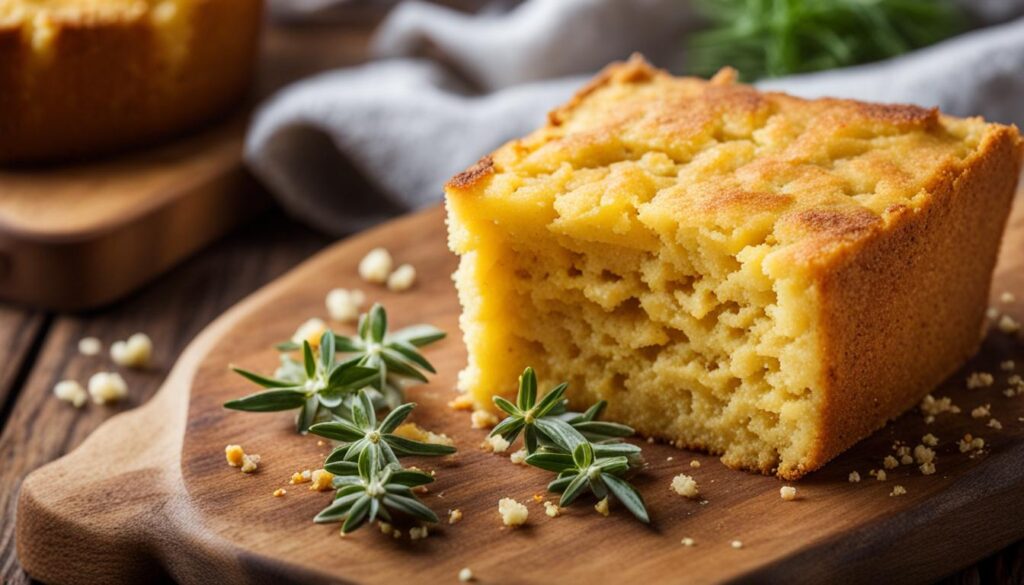
Cornbread and champagne are two iconic elements often associated with New Year celebrations. They carry deep cultural and symbolic significance, representing wealth, prosperity, and the spirit of celebration.
“Cornbread and champagne serve as delightful reminders of the abundance and joy that the new year brings.”
Cornbread, with its golden hue and round shape, is often seen as a symbol of wealth and prosperity. Its vibrant color resembles the hue of gold, evoking feelings of abundance and good fortune. Cornbread has a long history in American culture, being a staple food since colonial times. It is often served alongside traditional Southern dishes and is a cherished part of New Year’s celebrations. It is believed that by consuming cornbread on New Year’s Day, one invites prosperity and success into their lives.
Champagne, on the other hand, is synonymous with celebration and luxury. Its effervescence and elegance make it a popular choice for toasting and marking special occasions. As the clock strikes midnight on New Year’s Eve, champagne is often poured into fluted glasses, creating a festive atmosphere and symbolizing the start of a new year filled with joy and possibility.
Together, cornbread and champagne embody the spirit of celebration and the optimism that accompanies the start of a new year. They remind us to cherish the moments of abundance, and to toast to our dreams and aspirations. By incorporating these symbolic elements into our New Year traditions, we embrace the hope for a prosperous and joyous year ahead.
Oranges, Onions, and Tamales: Unique New Year Tokens
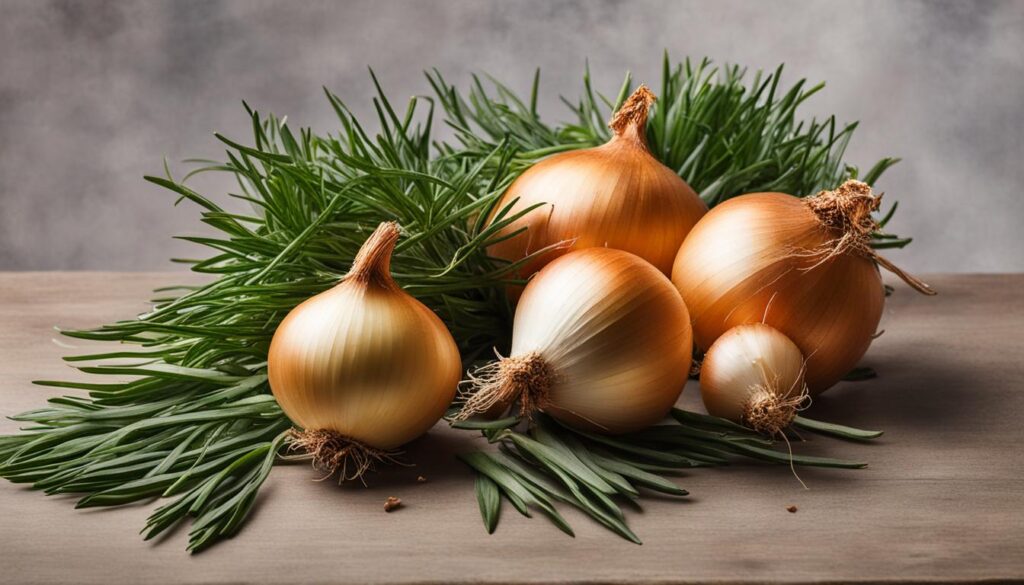
In addition to the more common fruits and vegetables, there are unique tokens associated with New Year’s traditions. Oranges are believed to bring success and sweetness, onions symbolize layers of growth and prosperity, and tamales represent the binding of family and future together. We will explore the symbolism and cultural traditions behind these unique New Year tokens.
Oranges: Citrus for Success and Sweetness
Oranges play a significant role in New Year traditions around the world. The bright color and refreshing taste symbolize success and sweetness for the upcoming year. In many cultures, oranges are exchanged as gifts or displayed in homes during the New Year period. The citrus fruit is believed to bring good luck, happiness, and prosperity. Its vibrant appearance and tangy flavor energize the spirit and inspire a positive start to the year.
Onions: Layers of Growth and Prosperity
Onions have a symbolic meaning that goes beyond their culinary uses. The layers of an onion represent growth and prosperity. Just as an onion grows by adding layer upon layer, it signifies the accumulation of wealth and success over time. In some cultures, onions are included in New Year’s meals or placed near doorways to ward off evil spirits and to invite abundance into the home. The humble onion serves as a reminder that growth and prosperity are achieved through patience, hard work, and the accumulation of many layers of experiences.
Tamales: Binding Family and Future Together
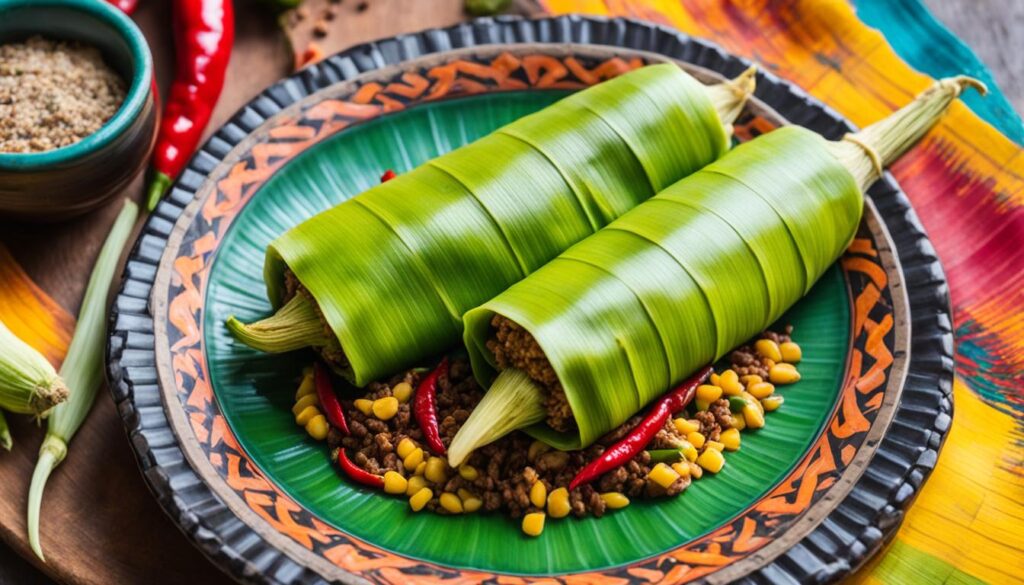
Tamales hold a special place in New Year celebrations, particularly in Latin American and Hispanic cultures. These savory delicacies, made from masa (corn dough) and filled with various ingredients, represent the binding of family and future together. The process of making tamales often involves gathering family and friends to participate in the preparation, creating a sense of unity, tradition, and shared love. With each mouthful of a tamale, the hopes and dreams of the family are enjoyed together, reinforcing the importance of family bonds and the optimism for a prosperous future.
| Symbol | Representation |
|---|---|
| Oranges | Citrus for success and sweetness |
| Onions | Layers of growth and prosperity |
| Tamales | Binding family and future together |
Conclusion
In conclusion, the rich tradition of consuming fruits and vegetables on New Year’s Day is deeply ingrained in cultural beliefs and superstitions. These vibrant and nutritious foods hold immense significance and symbolize more than just a healthy start to the year. They represent prosperity and good luck, serving as powerful manifestations of our hopes and aspirations for the future.
By incorporating fruits and vegetables into our New Year traditions, we not only celebrate the abundance of seasonal produce but also embrace the belief that these foods can bring us closer to achieving our goals and dreams. From the sweetness of citrus fruits like oranges to the wealth-inducing properties of pomegranates and grapes, each fruit holds a special place in the tapestry of New Year traditions.
Furthermore, by emphasizing the consumption of vegetables like collard greens and cabbage, we not only nurture our bodies with vital nutrients but also recognize the importance of health and longevity. These culinary symbols of prosperity remind us to prioritize our well-being as we embark on another year of growth and opportunities.
As we gather with loved ones and partake in these age-old traditions, we create a sense of unity and connection that transcends cultural boundaries. By embracing the ritual of consuming fruits and vegetables on New Year’s Day, we join a global community that believes in the power of positive intentions and the potential for a year filled with luck, prosperity, and good health.
Source Links
- https://nypost.com/2023/12/30/lifestyle/10-new-years-eve-traditions-for-good-luck-in-2024/
- https://www.realsimple.com/holidays-entertaining/traditional-new-years-day-food
- https://www.myjournalcourier.com/news/article/home-traditon-fruits-17667522.php

Thanks for the comments
Thank you for your offer but at this time I am well occupied, it might be in the future